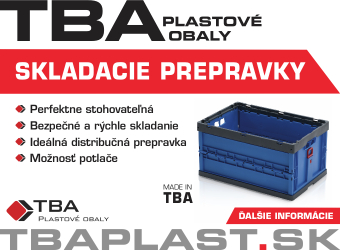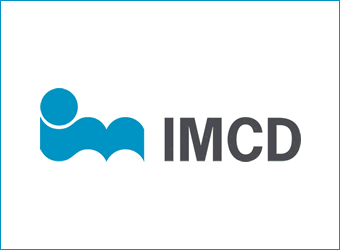Weekly commodity price report
Here are the market prices of various types of commodity plastics PE-LD, PE-HD, PP and PS in Central and Eastern Europe with a delay of 5 weeks. The data was processed by our partner myCEPPI.
Are you interested in current prices for commodity plastics? You can order Weekly polymer price reports from our editors.
Prices for this week 7/2020
SMALLER PRICE INCREASES WORKED, BIG ONES DID NOT
Last week's "commodity" polymer prices are again rising
- EUR/USD: 1.0843, weakening of the Euro
- NAPHTHA (European): 477.35 USD/t, rising prices again,
- For the time being, customers have only gathered information last week,
- All Central European polymer producers are producing.
- Expected outages:
- Rompetrol: March 15 - May 5, 2020 (LDPE, PP)
- Unipetrol: April 6 - May 18, 2020 (HDPE, PP, C2, C3)
- North American, Russian and Iranian goods are on the market again, but the quantity is not significant yet
- Cheap North American HDPE available from Northwest Europe.
Polymer manufacturers reported "not bad" demand from Central Europe. This means that converters are generating demand corresponding to February of previous years towards producers. The February sales plans seem to be fulfilled. Smaller price increases of EUR 10-15 have been passed on for both PE and PP, mainly for products at the bottom of the price range. In the case of polyolefin grades, there is no expectation of a price increase, so there is no advance purchase. A sudden surge in demand is unlikely. The supply is satisfactory. Polyolefin price bands narrowed, with lower and upper values converging. Exceptional differences can be observed only in the spot markets, especially in the case of Russian polyethylene grades in Poland. However, distributors are less satisfied. Producers are increasingly reaching out to mid-sized and smaller customers while increasing distributors' purchase prices. Traders who work at a lower fixed cost and arte content with a lower margin per ton are slightly better off. However, there is a lot of selling pressure on both distributors and traders. However, their increased sales activity gives converters a sense of security of supply. This is also the reason for this “pleasant”, calm but not bad demand in February. For the time being, the impact of the Chinese coronavirus epidemic is not felt in the market. Some claim that it will have a negative impact on the European market, while others believe that a decline in imported Chinese finished plastic products will also open up market opportunities for Central European plastic converters.
The increase in SM prices by EUR 50 went selectively into polystyrene. For some products, it is good to have half of the SM price increase passed on, while for others it has even gone beyond the SM price increase. After two months of SM price rises, the question for everyone is whether the price rises will continue in March or will the trend break? The upward trend is expected to continue into March. However, North American import SM is expected to break prices in the spring. Another big question is how SM demand will develop in the Far East, especially in China. According to most market forecasts, this year's Chinese SM demand will be weaker than expected, especially in the spring. In this way in the middle of May at latest we shall anticipate dropping SM prices on the world market.
POLYOLEFIN GRADES
LDPE prices were in a range of 890-990 €/t last week. Demand for the LDPE market stalled slightly. February prices are on average 10 € higher than in January. However, demand, especially in Poland, appears to be weak. In particular, packaging manufacturers producing for Western European exports complain about falling demand. There is no significant decline in demand in the rest of Central Europe. Buyers are in no hurry to make a purchase. Unchanged prices are expected in March as well.
Typical HDPE prices were in a range of 900 - 1,040 €/t in Central Europe last week. Average prices increased by about € 10. Demand is moderate, corresponding to February. Russian grades are still available on the Polish market, typically for less than € 900. However, Central Europe as a whole is priced above € 900.
- HDPE BM: 920-1,020 €/t,
- HDPE IM: 900-1,020 €/t,
- HDPE FILM: 900-1,010€/t,
In terms of supply, there is little North American merchandise on the market. And their prices have also risen. Thanks to the continued weakening of the euro.
Typical HDPE (100) prices were in a range of 1,110-1,210 €/t last week. For January there was no price change. Manufacturers reported weaker than in January, but satisfactory demand.
LLDPE C4 prices were in a range of 890 - 1,020 €/t last week. They are rising slowly. The typical trading price range is 950-980 EUR/t everywhere in Central Europe except the southern region. There are
still cheap items on the market in Romania. However, new incoming charges will be more expensive due to the weakening Euro.
mLLDPE (C6) prices were in a range of 1,020-1,160 €/t last week. February prices did not rise compared to January. There is significant oversupply on the market.
Typical PPH Raffia prices were in a range of 925-1,030 €/t last week. On average, they increased by € 10 compared to January. Even the Serbian manufacturer, which has been lagging behind in the increase, was able to raise the price. Demand is good and is constantly picking up.
The price of PPM IM non-special products with medium melt index was in a range of 925-1,030 €/t last week. Compared to January, they rose by an average of € 10. The price of products with high melt flow index ranged from 970 to 1,090 €/t. Price increases have happened here as well. There is no large quantity of cheap Russian imports of PPH in the market, the quantity available is at Central European market prices.
Typical PPC prices ranged from 1,040 to 1,180 €/t in Central Europe. Based on the data received no price increase can be detected. Compared to January, there was a rollover.
PPR prices were in a range of 1,110-1,220 €/t last week. The average value of the price increase was less than € 10 in Central Europe. Demand is "not bad" but the real season has to wait.
The typical prices of the last week are presented in the table below (full truck load 20-22.5 t):
| Grade name | Typical polymer price ranges in the second week of February 2020, Central Europe (€/ton) |
| HDPE BM | 910-1020 |
| HDPE Film | 900-1010 |
| HDPE IM | 910-1020 |
| HDPE Pipe (100) | 1120-1210 |
| LDPE Film | 900-1000 |
| LDPE GP | 900-1000 |
| LLDPE C4 | 880-1020 |
| mLLDPE C6 | 1020-1160 |
| PPC | 1040-1180 |
| PPH IM | 925-1020 |
| PPH IM HMFR | 980-1080 |
| PPH Raffia | 935-1030 |
| PPR | 1110-1220 |
| GPPS | 1100-1235 |
| HIPS | 1190-1315 |
| EPS | 1130-1180 |
| ABS | 1400-1650 |
POLYSTYRENE GRADES
Typical EPS prices were in a range of 1,130-1,180 €/t last week. In Poland, prices for some customers have reached as much as 1,200 €/t. However, Russian and Iranian import grades were priced at around or slightly below € 1,100. Generally speaking, the € 50 price increase was accepted in Poland, but not in other Central European countries. The accepted price range in these countries was between 1,140 and 1,175 €/t. There is no season yet, but more have been shopping.
Typical GPPS prices were in a range of 1,100-1,235 €/t, while HIPSprices were in a range of 1,200-1,320 €/t . The price increase did not affect the products in the same way. The GPPS price band has widened, and even a slight decrease has been observed mainly in Poland. European-made GPPS and HIPS saw price increases of 20-30 € / t.
Typical natural ABS prices were in the price range of 1,400-1,650 €last week. For European products, the price was increased by 30-50 €. However, the market is difficult to see due to cheap Far Eastern import volumes.
| Type | Price |
|---|---|
| HDPE blow molding | 950 € / t |
| HDPE film | 958 € / t |
| HDPE injection molding | 963 € / t |
| HDPE pipe (100) | 1163 € / t |
| LDPE film | 953 € / t |
| LDPE general purpose | 953 € / t |
| PP co-polymer injection molding | 1112 € / t |
| PP homo-polymer fiber | 977 € / t |
| PP homo-polymer injection molding | 986 € / t |
| PPR | 1156 € / t |
| GPPS | 1160 € / t |
| HIPS | 1263 € / t |
| EPS | 1160 € / t |
myCEPPI – a new voice and new approach on the plastics industry consulting and business intelligence market. With our expert advice, you can get a detailed, up-to-date and tailor-made picture of the Central and Eastern European plastics market and its main trends, data, news and key players.
Our services rely on our personal, regular and in-depth relations with players of the CEE plastics industry.
Each month, we conduct hundreds of interviews and telephone calls with industry players – plastics converters, traders, resin manufacturers – and we are also present at the biggest regional plastics trade fairs and conferences.
The information we collect in the process forms the basis of our weekly price report and market analysis; it feeds into our plastics industry company database; and it serves as the starting point for our multi-level consulting services for companies that need help sizing up, entering or navigating a specific market.
Our experts possess decades of plastics industry experience, as well as fluency in several regional languages.
Our partners include
- key players of the CEE plastics industry – the resin
- master-batch and machinery manufacturers
- distributors, and plastics converters that shape market trends across the region.
We would be happy to welcome you as a partner; please do not hesitate to contact us!
(László Büdy, Managing director, head of consulting)
Price history
- 2024:
- 2023:
- 2022:
- 2021:
- 2020:
- 2019:
- 2018:
- 2017:
Latest Classifieds
-
05.03.2024 | ID: 202418726
Top Advert -
15.04.2024 | ID: 202418980
For Sale: PP vstrekovací - drť biela
15.04.2024 | ID: 202418979
For Sale: Drť EVA Escorene UL00514
15.04.2024 | ID: 202418978
-
15.04.2024 | ID: 202418977
For Sale: PA 6.6 Ultramid A3U42G6 GF-FR grind
15.04.2024 | ID: 202418976
To purchase: LDPE film, 400 t/month
15.04.2024 | ID: 202418975
-
15.04.2024 | ID: 202418974
For Sale: Color Masterbatches on LLDPE carrier
15.04.2024 | ID: 202418973
To purchase: LDPE film, 400 t/month
15.04.2024 | ID: 202418975
To purchase: Package quality LDPE film. 500 t/month
15.04.2024 | ID: 202418966
To purchase: Dirty granulates from ground
15.04.2024 | ID: 202418964
To purchase: PC and PMMA waste, regrinds, lumps etc.
11.04.2024 | ID: 202418943
To purchase: PET transparent trays, only Central Europe due to shipping costs
10.04.2024 | ID: 202418939
To purchase: PA6.6 GF25, TECHNYL A218, original
09.04.2024 | ID: 202418928
-
09.04.2024 | ID: 202418927
-
09.04.2024 | ID: 202418924
To purchase: PA6 GF, PA6.6 GF, PPA
09.04.2024 | ID: 202418922
-
05.03.2024 | ID: 202418726
Top Advert -
15.04.2024 | ID: 202418980
For Sale: PP vstrekovací - drť biela
15.04.2024 | ID: 202418979
For Sale: Drť EVA Escorene UL00514
15.04.2024 | ID: 202418978
-
15.04.2024 | ID: 202418977
For Sale: PA 6.6 Ultramid A3U42G6 GF-FR grind
15.04.2024 | ID: 202418976
-
15.04.2024 | ID: 202418974
For Sale: Color Masterbatches on LLDPE carrier
15.04.2024 | ID: 202418973
For Sale: Moisture absorber (Desiccant) 200 t every month
15.04.2024 | ID: 202418972
Upcoming Events
17.04.2024 - 20.04.2024 | Istanbul
17.04.2024 - 19.04.2024 | Osaka
22.04.2024 - 26.04.2024 | Hannover
22.04.2024 - 26.04.2024 | Sao Paulo
23.04.2024 - 25.04.2024 | Maastricht
23.04.2024 - 26.04.2024 | Shanghai
23.04.2024 - 26.04.2024 | Wels
23.04.2024 - 25.04.2024 | Varšava
06.05.2024 - 10.05.2024 | Orlando
15.04.2024
16.04.2024
16.04.2024
17.04.2024
17.04.2024
Training - Injection moulding technology I.
15.04.2024
Festival of personnel and talent development
16.04.2024
17.04.2024
Training - Injection moulding technology II.
17.04.2024
17.04.2024
Job offers
-
11.04.2024
Plastic worker, gluing staff - FORM s.r.o.
10.04.2024
Logistics, warehouse and shipping supervisor - KNP s.r.o.
09.04.2024
Warehouseman - AIS Automotive Interior Systems Slovakia s.r.o.
09.04.2024
Sales representative / sales specialist - Plastcom, spol. s r.o.
04.04.2024
Maintenance and operation of the production line - Plastcom, spol. s r.o.
04.04.2024
Quality control technician - ESOX-PLAST s.r.o.
04.04.2024
Master of professional training - ESOX-PLAST s.r.o.
04.04.2024
Store manager - Ecocycle s.r.o
25.03.2024
Branch Dictionary







